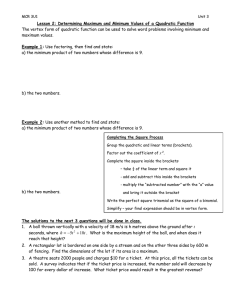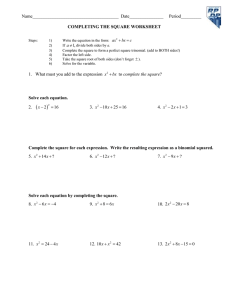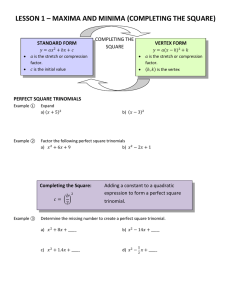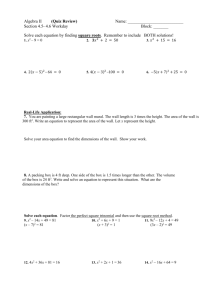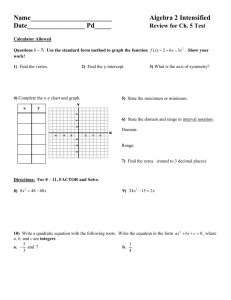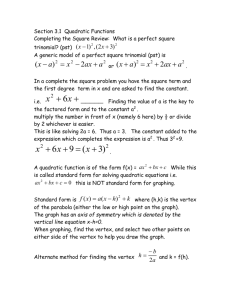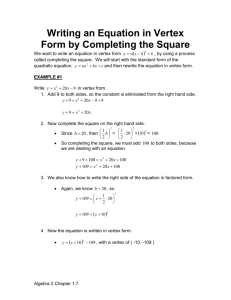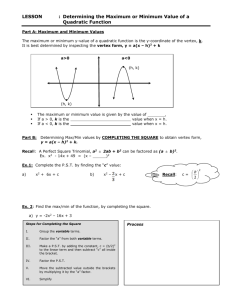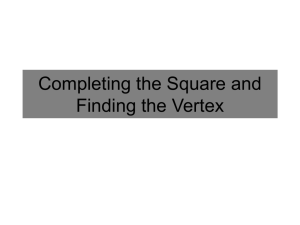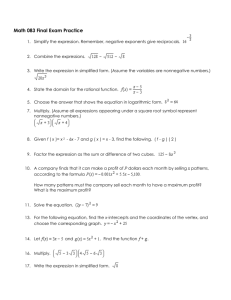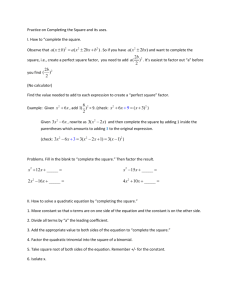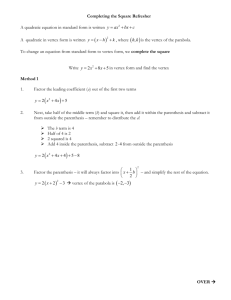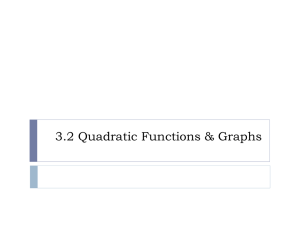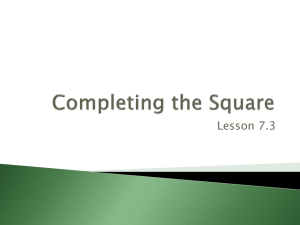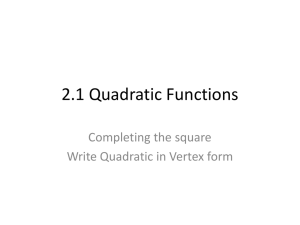Relating the Standard and Vertex Forms: Completing the Square
advertisement
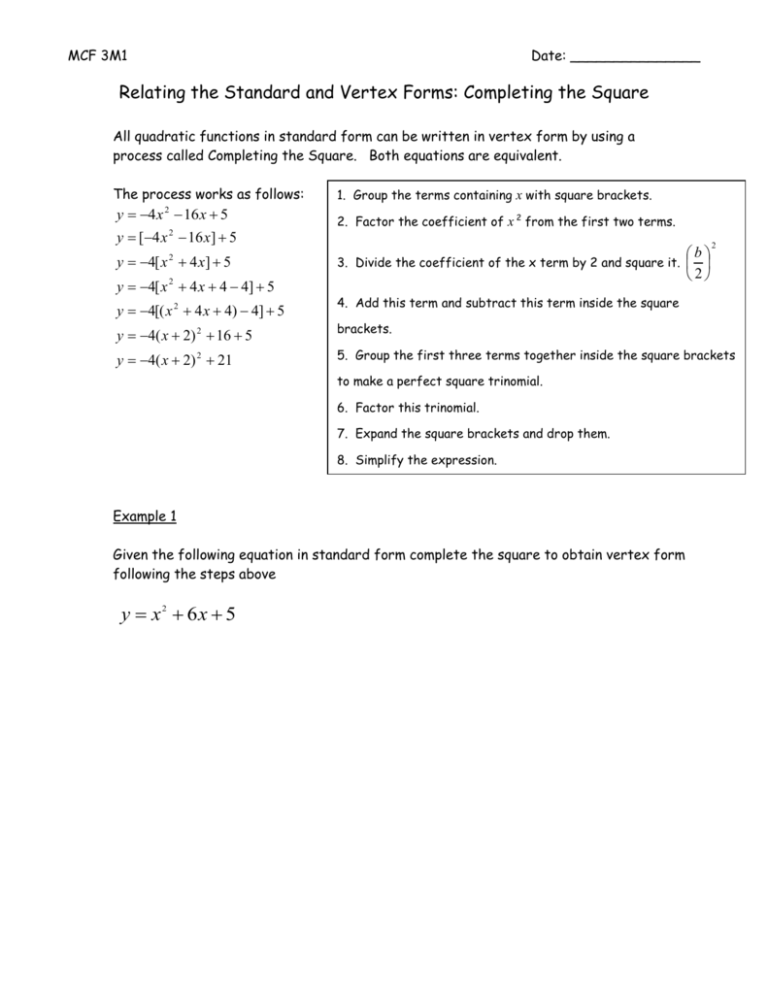
MCF 3M1 Date: _______________ Relating the Standard and Vertex Forms: Completing the Square All quadratic functions in standard form can be written in vertex form by using a process called Completing the Square. Both equations are equivalent. The process works as follows: y 4 x 16 x 5 2 y [4 x 16 x] 5 1. Group the terms containing x with square brackets. 2. Factor the coefficient of x 2 from the first two terms. 2 y 4[ x 4 x] 5 2 y 4[ x 2 4 x 4 4] 5 y 4[( x 2 4 x 4) 4] 5 b 3. Divide the coefficient of the x term by 2 and square it. 2 2 4. Add this term and subtract this term inside the square y 4( x 2) 2 16 5 brackets. y 4( x 2) 2 21 5. Group the first three terms together inside the square brackets to make a perfect square trinomial. 6. Factor this trinomial. 7. Expand the square brackets and drop them. 8. Simplify the expression. Example 1 Given the following equation in standard form complete the square to obtain vertex form following the steps above y x2 6x 5 MCF 3M1 Example 2 Given the following equation in standard form complete the square to obtain vertex form following the steps above y 2 x 2 16 x 1 Example 3 Write the following quadratic function in vertex form (using fractions) y 2 x 2 3x 7 Example 4 Write the following quadratic function in vertex form (using decimals) y 2 x 2 3x 7
